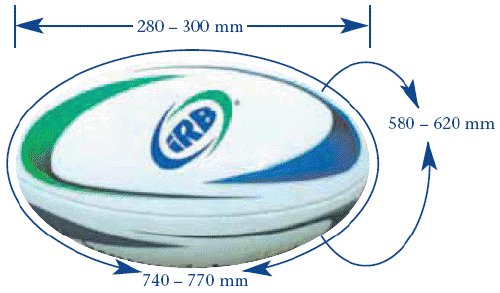
The first balls were made from 4 leather panels hand stitched together with a pigs bladder inside. The bladder was inflated whilst still fresh from the pig and the method was to use a clay pipe and lung power. Early balls varied in shape depending on the bladder being used. With the advent of rubber the bladders improved but the ball was still leather. It was only in the 80's that leather balls were phased out and modern synthetic materials used. This now means that non-slip surfaces and waterproofing make the modern ball lighter and easier to handle and kick than the slippery and heavy leather ball when wet.
Types & Sizes of Balls
There are small differences between different manufacturers balls but the most striking difference is in the size. All balls must now conform to the IRB standard but vary in size depending on the age of the player using them, the sizes are:
Full size for Under 15's through to adult - size 5 ball
Middle size for under 10's to under 14's - size 4 ball
Small size for mini's up to under 9's - size 3 ball
The original balls were more plum shaped than oval. Stitched balls were inclined to burst when the stitching rotted or holes were too close to the edge of the leather to take the pressure. Mud stuck to the leather balls making them heavy to pass and like a bar of soap to hold. Balls were made from 8 panels (torpedo) pointed shape, 6 panels or the now most common 4. Player power in 1932 lead to a rule change which reduced the ball size by 1 inch. Weighted balls are used to strengthen the scrum half pass. Australia use a slightly different ball which accounts for many players having difficulties when kicking for goal. Top kickers can get a ball to bounce where they want but most of us never know where it will end up.
Rugby ball model information












